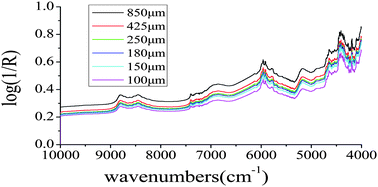Near infrared spectroscopy combination with PLS to monitor the parameters of naproxen tablet preparation process
Abstract

* Corresponding authors
a
College of Chemical Engineering, Sichuan University, Cheng Du 610065, China
E-mail:
lihuilab@sina.com
Fax: +86 28 85401207
Tel: +86 28 85405149

 Please wait while we load your content...
Something went wrong. Try again?
Please wait while we load your content...
Something went wrong. Try again?
W. Luo, J. Wu, X. Wang, X. Lin and H. Li, Anal. Methods, 2013, 5, 1337 DOI: 10.1039/C2AY26260F
To request permission to reproduce material from this article, please go to the Copyright Clearance Center request page.
If you are an author contributing to an RSC publication, you do not need to request permission provided correct acknowledgement is given.
If you are the author of this article, you do not need to request permission to reproduce figures and diagrams provided correct acknowledgement is given. If you want to reproduce the whole article in a third-party publication (excluding your thesis/dissertation for which permission is not required) please go to the Copyright Clearance Center request page.
Read more about how to correctly acknowledge RSC content.
 Fetching data from CrossRef.
Fetching data from CrossRef.
This may take some time to load.
Loading related content
